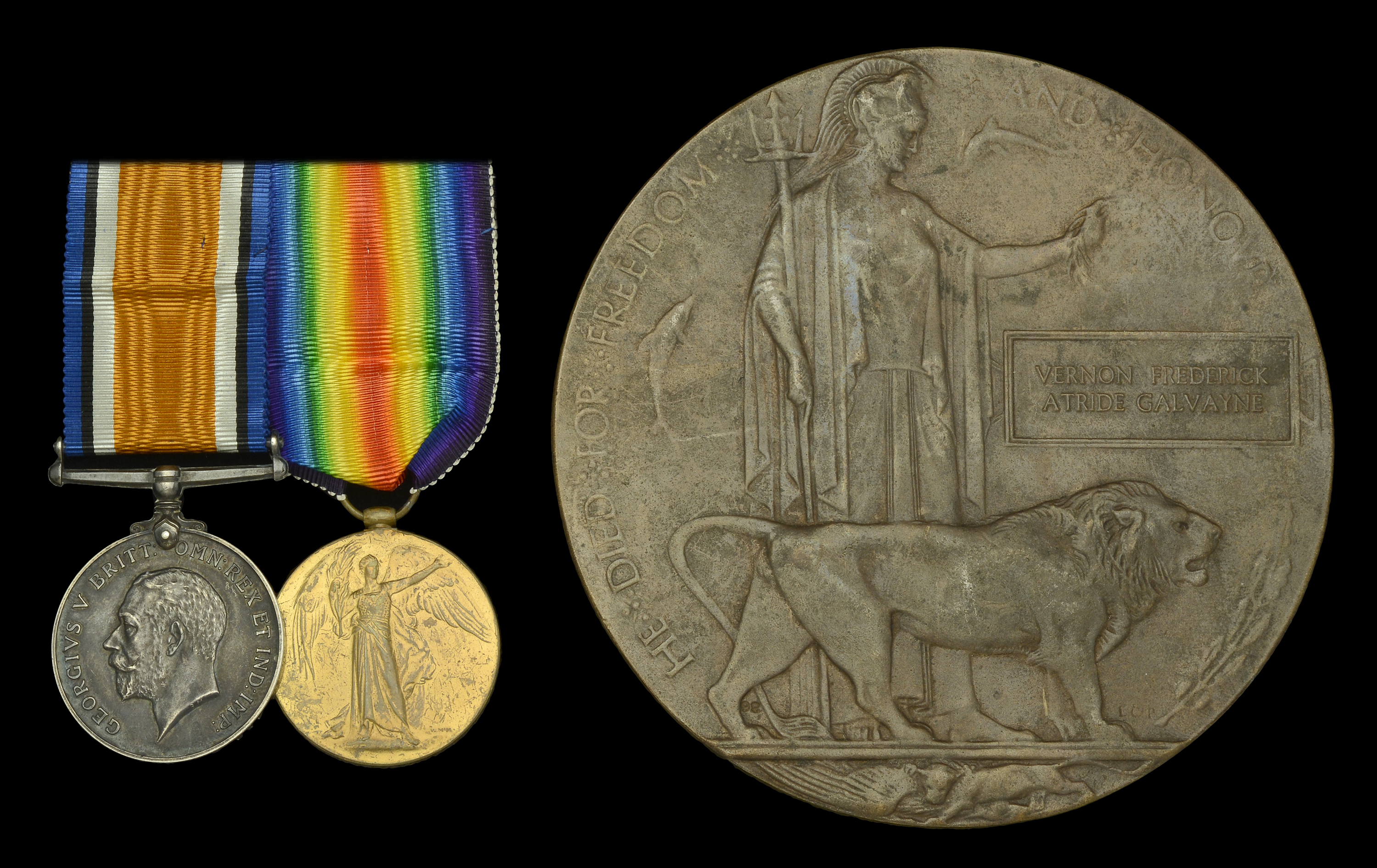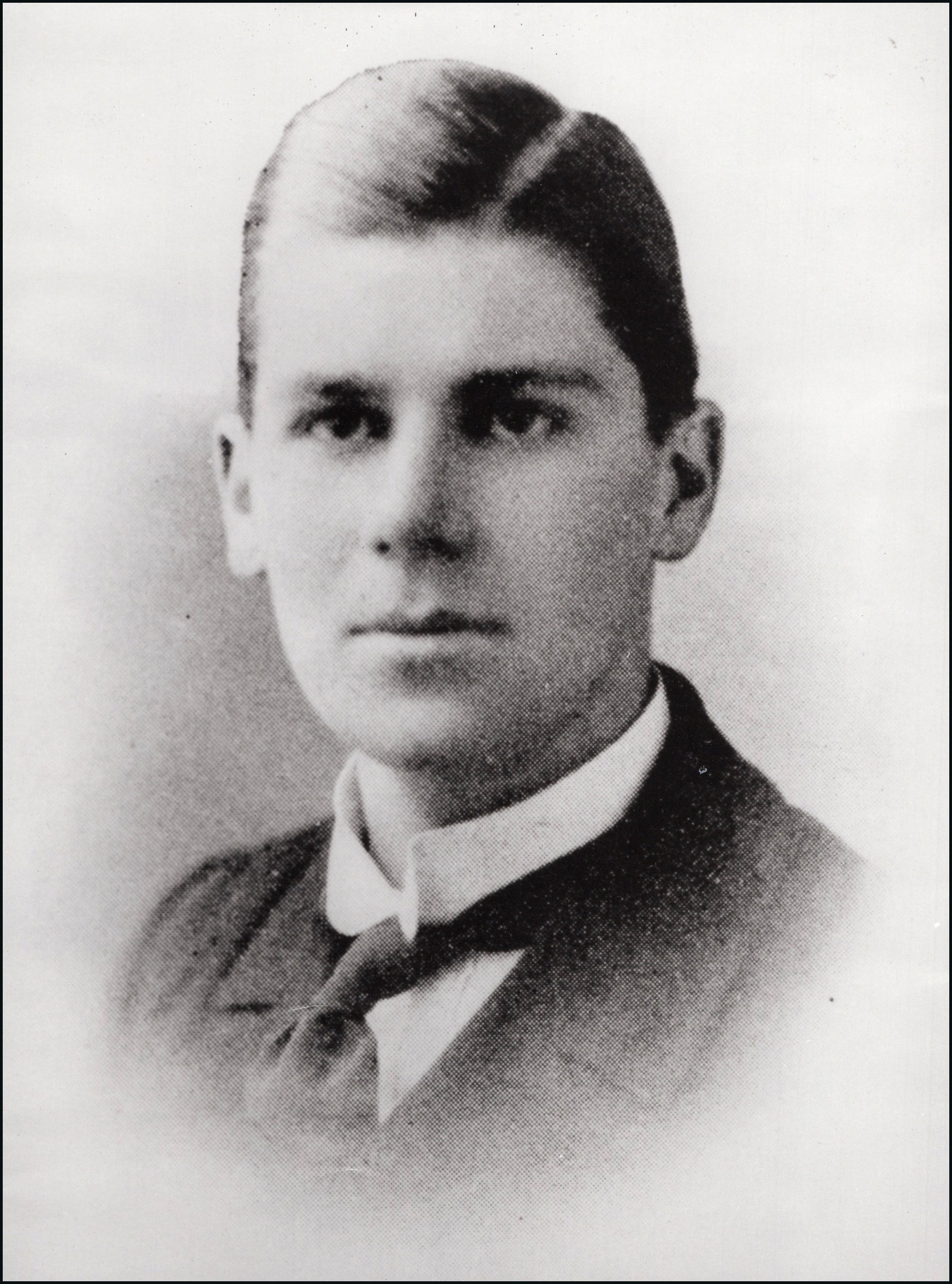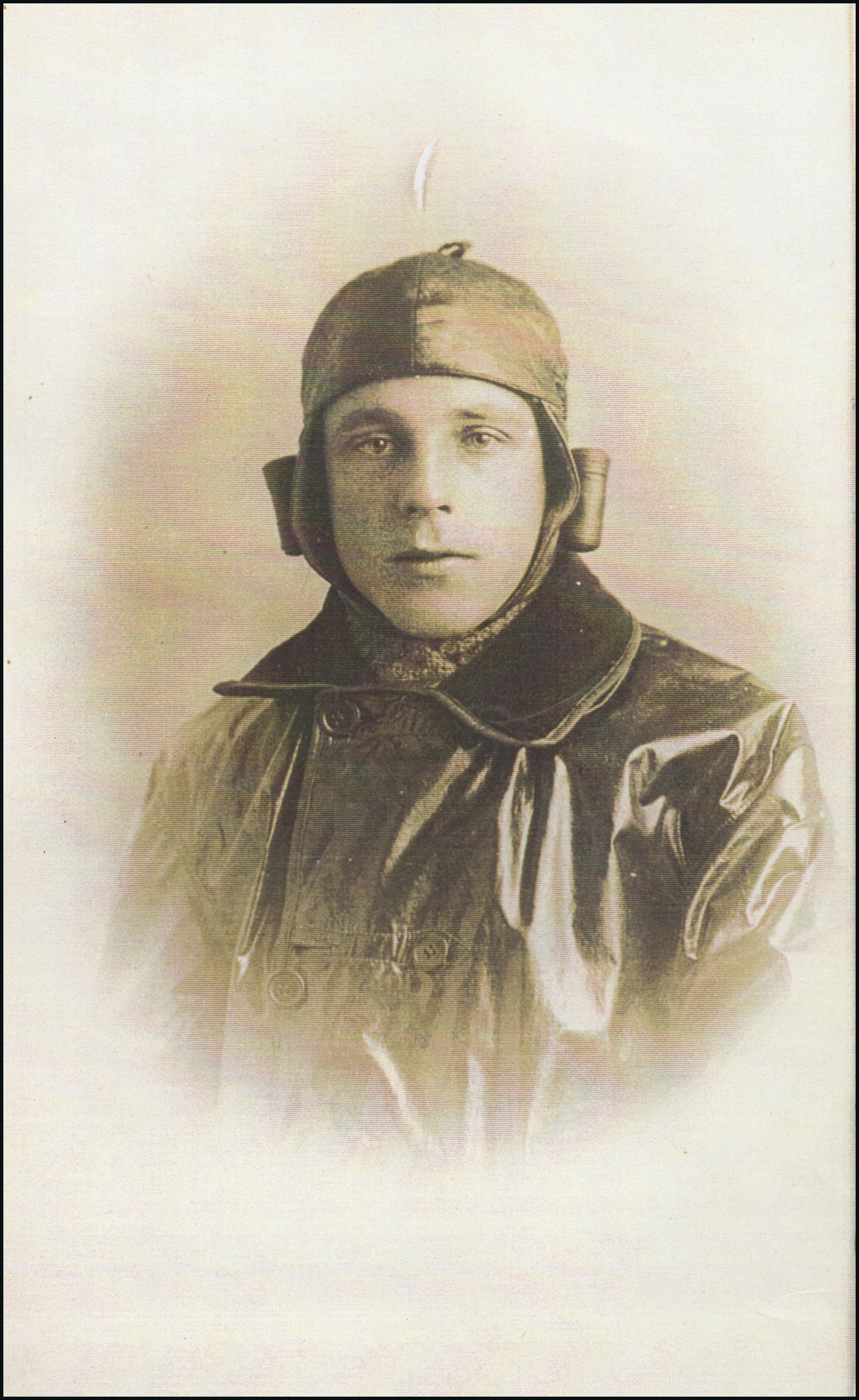The Great War pair awarded to Lieutenant V. F. A. Galvayne, Royal Air Force, late Royal Naval Air Service, who was killed in action on 4 June 1918, when ‘a bullet entered at the side of his mouth and came out at the back of his head’ during the greatest combat ever fought between seaplanes British War and Victory Medals (Lieut. V. F. A. Galvayne. R.A.F.), together with Memorial Plaque (Vernon Frederick Atride Galvayne), this in its original card envelope, extremely fine (3) £800-£1,000 --- Importation Duty This lot is subject to importation duty of 5% on the hammer price unless exported outside the UK --- --- Vernon Frederick Atride Galvayne was born in Egremont, Cheshire, on 4 September 1897, and was educated at Wycliffe School, Stonehouse, Gloucestershire, where ‘he was a vigorous, inventive, popular and trustworthy boy, possessing talents of many sorts’; the school’s roll of honour, refers. Having then commenced work with an accountancy firm, Galvayne, changed tack in favour of studying engineering, an ambition curtailed by the outbreak of war. Joining the Royal Naval Air Service as a Flight Sub Lieutenant in September 1916, he qualified as a seaplane pilot and served at Calshot, Westgate, Dover and Dunkirk in the course of 1917, prior to joining R.N.A.S. Felixstowe early in 1918. It was about this time the Germans had achieved some success in engaging individual British seaplanes in superior numbers, by luring them over to Texel by means of false signals. As a result, a force comprising three Felixstowe and two Great Yarmouth seaplanes was assembled on 4 June 1918, to carry out a retaliatory operation. The force was equipped with ‘Felixstowe’ Flying Boats which, with a length of 46ft. and wingspan of 95ft. were among the largest aircraft in operation at the time. Armed with six Lewis guns, and powered by two 345hp. Rolls Royce engines, they were capable of a maximum speed of 85-90 knots. The crew of five comprised two pilots, an observer/gunner, and engineer and a wireless telegraphist, the latter two also being responsible for manning the seaplane’s rear armament if required. As it transpired, they were very much required on 4 June 1918. Having adopted a V-formation in the journey over the North Sea, the force arrived at its chosen patrol line, north-west of Terschelling Island, in the early afternoon. Galvayne was flying N 4302, with fellow pilot Captain Barker, and they were joined by Private Hopkins, as telegraphist, Private Reid, as engineer, and by Ensign Keyes of the U.S. Navy, along for the ride as a gunner. Around 3.30 p.m., one of our seaplanes developed engine trouble and had to ditch, the force commander signalling its crew by Aldis with an instruction to make for the Dutch coast. Soon afterwards, five enemy seaplanes hove into view, heralding the commencement of ‘the greatest action that was fought between seaplanes during the war.’ They chose to pick on the ‘Felixstowe’ which had ditched earlier, and owing to their superior speed, it proved challenging for our remaining seaplanes to keep up an effective fire. Worse still, one of the German aircraft headed off in the direction of its Borkum base to rally support, and at 4.30 p.m. ‘a compact swarm of black specks’ was seen rapidly approaching on the eastern horizon, a swarm that ‘proved to be fifteen seaplanes, in three squadrons of five.’ Captain Robert Leckie, senior officer of the Felixstowe force, took instant action, one of his pilots later recalling he went ‘Hell-for-Leather for them, and drove clean, slap-bang though the enemy formation, splitting it right up, carrying away the wireless aerial of his boat on the top plate of the leading enemy plane.’ In a related article, The Great Seaplane Battle, Hal Giblin takes up the story: ‘Leckie led his machines to port ‘line-ahead’, cutting off three enemy seaplanes making up the right wing their formation. The British trio concentrated the fire of their bow guns and then their port guns onto the enemy as they swept by. So much lead was pumped into these three that their return fire quickly petered out to nothing – Leckie felt sure that this meant they had hit their observers. Still in ‘line ahead’ Leckie now led his flight in a circle around the enemy formation with all guns ‘firing away like blazes,’ the flying boats bumping and rolling all over the place from the many conflicting slipstreams. An enemy seaplane, in trying to get under the tails of Hodson’s machine, was shot down. Another, attacking Leckie’s machine, was also shot down. The fight involving the three remaining British machines went on, and in N 4302, Lieutenant Galvayne, after handing over the controls to Captain Barker, kneeled and faced backwards in the cockpit, the best way to direct evasive action and to advise Barker of the enemy movements behind him. The view of the pilots was so restricted in these huge machines and, as the controls required full ‘hands-on’ attention, it sometimes became very necessary for the second pilot to act as a human rear-view mirror.’ Ensign Keyes of the U.S.N., acting as a gunner in N4302, later penned an account of the action which appeared in the American and British press, in which he described how they swung into battle formation and aimed for the middle of 10 approaching enemy seaplanes: ‘When we were nearly in range four machines on the port side and five on the starboard rose to our level. Two planes passed directly beneath us, shooting upwards. Firing was incessant from the beginning and the air seemed blue with tracer smoke. The Germans used explosive bullets. Once I looked round and noticed Lieutenant Galvayne was in a stooping position, with his head and one arm on his seat … all this I noticed in a fraction of a second, for I had to continue firing. A few minutes later, I turned around once more and found with a shock that Lieutenant Galvayne was in the same position. It was then that the truth dawned on me.’ Galvayne, as subsequently confirmed by Captain Barker, had been shot through the head and died instantly. He was the only British casualty of the action. His comrades from Felixstowe and Great Yarmouth attended his funeral at Birkenhead six days later, and messages of condolence were also received from those who had been interned in Holland following the action. Sold with a file of copied research.












